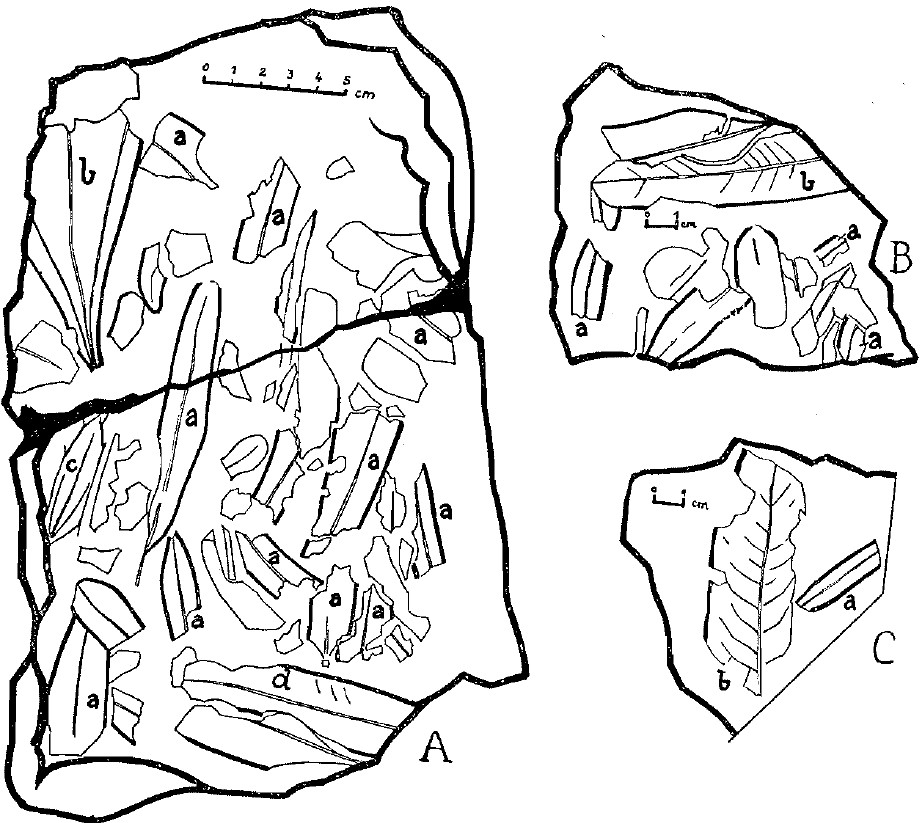Dibella Fm
Type Locality and Naming
Faure, 1954, 1966; Faure et al., 1956.
References: Boureau, 1955; Furon, 1956, 1964; Faure, 1954, 1966; Faure et al., 1956; Fabre et al., 1983.
Synonym: Série de Dibella; Equivalent(s): Achegour Fm, Tiffa Fm, Tégama Gr, Téfidet Gr
Lithology and Thickness
Predominantly coarse sandstone with cross-bedded stratification underlined by gravel areas (Fig. 1). Towards the base, several conglomerate levels exist, which include quartz pebbles. The color of the sandstones is generally light. White, beige-pink, and especially gray dominate, often masked by a black patina. Silty levels play only a secondary role; they are reduced to inter-beds not exceeding a few decimeters. Its thickness is 150-200 m.
[Figure 1: Section of the Dibella Formation 3 km E-NE of the Dibella wells (Source: Faure, 1966, page 220)]
Relationships and Distribution
Lower contact
Discordance onto the Precambrian basement (rubified granite)
Upper contact
Overlying unit is the Ezerza Fm
Regional extent
GeoJSON
Fossils
Traces of plants (Podocarpites saharianum Boureau) and imprints of leaves of Dicotyledonous Angiosperms (Laurophyllum and Cinnamomoides) (Fig. 2). Faure (1966) states: “The shale levels with vertebrates of the Elrhas formation, known to the south and east of the Aïr, seem to be absent in the Dibella formation. Sedimentation may not have started there until after the period characterized by large lakes.”
[Figure 2: Drawings of Dicotyledonous Angiosperms [Podocarpites (?) saharianum (Aa, Ba, Ca); Laurophyllum gadilhei (Ad, Bb, Cb); Cinnamomoides faurei (Ab); Cinnamomoides tchadense (Ac)] leave imprints from the Dibella Fm (Boureau, 1955)]
Age
Depositional setting
Continental
Additional Information

